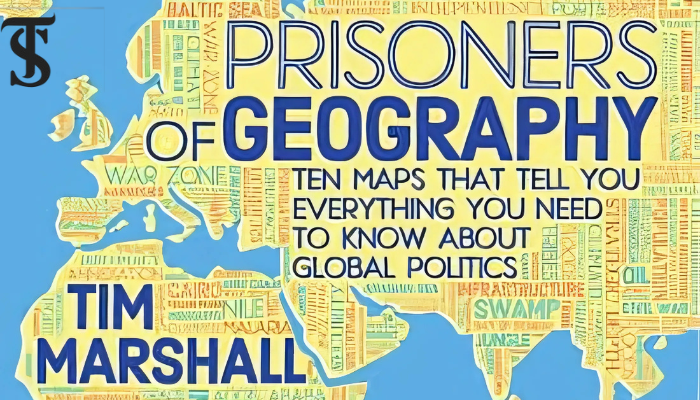Asia’s Cauldron: The South China Sea and The End of a Stable Pacific

- Maritime Conflicts and Power Struggles: Kaplan emphasizes that future geopolitical clashes in the 21st century may center on maritime borders in Southeast Asia, especially in the South China Sea. The region’s trade routes, rich natural resources, and disputed islands like the Spratlys make it a potential flashpoint. Kaplan compares China’s position in the South China Sea to America’s dominance of the Caribbean in the previous century.
- US-China Rivalry: Kaplan discusses the growing military competition between the US and China in the Pacific and Indian Oceans. China aims to reduce US influence in Asia and establish regional dominance, while the US seeks to counterbalance China's rise through military build-up, particularly naval forces.
- Regional State Dynamics: Kaplan explores the strategic positions of Southeast Asian countries such as Vietnam, Malaysia, Singapore, and Taiwan. Each country balances its relationship with China and the US, contributing to the complexity of the geopolitical situation in the South China Sea.
It has been observed that, over the last twenty years or so, the center of world politics and power has changed, and it Is drifting towards east from west. The same thoughts are also inked by Robert D. Kaplan, in his book, “Asia’s Cauldron: The South China Sea and The End Of A Stable Pacific”. Kaplan believes that the Southeast Asian coastline may become the center of the 21st century’s future clashes. The author’s central idea is based on the sea frontiers, rather than land. Maritime borders of Southeast Asian countries might become a flashpoint in future clashes. As Kaplan states: “Europe is a landscape; East Asia is a seascape.”
The South China Sea has great importance, due to its major trade route, and its richness in natural resources like oil and gas. The author relates China’s position in the South China Sea, same as America’s in the Caribbean Sea, during the previous century. The author has highlighted the importance of the growing sea power capabilities of countries located in the South China Sea region. A major source of contention in the region lies in the ownership of disputed islands like: Spratly, Parcels, and the Pratas. Kaplan has discussed the regional countries in separate chapters. The presence of America, and regional countries’ approach towards it, is a major concern for China, to achieve the status of hegemon in the region.
In the book’s first chapter, Kaplan emphasizes the importance of maritime geography as a deterrent to war, contrasting it with land-based invasions that caused immense devastation in the 20th century. He suggests that the seas surrounding East Asia offer a better chance of avoiding large-scale conflicts in the 21st century. Kaplan divides East Asia into Northeast Asia and Southeast Asia, with the South China Sea and the Korean peninsula playing key roles. The South China Sea, located between the Western Pacific and Indian Oceans, is strategically more crucial than the Caribbean, with the potential for power struggles over its control. He argues that China, as the dominant local power, holds a geographical advantage in the region, unlike America, which was distant from other states when it controlled the Caribbean.
The second chapter delves into the growing US-China rivalry, marked by both nations’ increasing military acquisitions, particularly in naval forces. The competition for dominance in the Pacific and Indian Oceans is evident in their military build-ups, with the US deploying aircraft carriers to counterbalance China’s rise. Kaplan suggests that China’s long-term goal is to diminish US influence in Asia, making the South China Sea critical to the global power balance.
As China is the dominant military and economic power in the region, so it is a real source of threat for regional States. To contain China’s growing influence, the regional states are inclined towards America, to create a balance of power.
In chapter three, Kaplan explores Vietnam’s potential to destabilize the region, given its historical animosity toward China. Despite past US-Vietnam conflict, Vietnam now seeks US support to counter China’s dominance in the South China Sea, where both nations have conflicting territorial claims. The unsettled maritime boundaries between Vietnam and China add complexity to their relationship.
Chapter four examines Malaysia’s moderate stance, with its focus on deterrence rather than confrontation. Malaysia’s good relations with both the US and China, as well as its claims in the Spratlys, reflect its strategic balancing act in the region. In chapter five, Singapore’s rapid economic and military development is highlighted. Positioned at the critical Strait of Malacca, Singapore is portrayed as a small but significant power with a robust military, resembling Israel’s regional influence.
The final chapters discuss Taiwan’s dispute with China over sovereignty and territorial claims. Kaplan portrays Taiwan as strategically vital, with strong trade ties with both China and the US. The book concludes with Kaplan drawing parallels to the Peloponnesian War, cautioning that a similar conflict between an existing superpower (the US) and a rising one (China) could occur unless the balance of power prevails.
Analysis & Conclusion.
Robert D. Kaplan is a renowned journalist and political analyst. He has written extensively on geographical geopolitical paradigms. In his book, “ASIA’S CAULDRON, THE SOUTH CHINA SEA AND THE END OF A STABLE PACIFIC” he has made a comparative analysis of contemporary seascape issues, with the disputes of Europe in the 20th Century, which were mainly land-based. In this book, Kaplan has explored the historical roots of states, which are located in the South China Sea region. His analysis is based on geographical, ethnic, and religious bases.
These historical conflicts are still the source of Contention among the states of this region, for example, the Vietnamese still claim to be the real Chinese and consider themselves to be the actual stakeholders of this region, due to the importance of the region’s trade route and natural resources. These claims have persuaded the states to acquire sufficient military power. As China is the dominant military and economic power in the region, so it is a real source of threat for regional States. To contain China’s growing influence, the regional states are inclined towards America, to create a balance of power.
In a nutshell, we can say that Kaplan has provided a good platform, for grasping the confused ongoing situation in the region. It can be considered as a seminal work and will help future scholars and policymakers in their respective works, who are interested in this important region.

Nasir Imtiaz
Nasir Imtiaz is the content strategist of The Spine Times.






I simply wished to say thanks yet again. I’m not certain the things that I could possibly have sorted out without those tactics documented by you over such area. It truly was a real terrifying issue in my position, but being able to see a well-written mode you resolved the issue took me to jump with joy. I’m happy for this advice and thus expect you really know what a great job your are accomplishing teaching others through the use of your webpage. I am sure you have never got to know any of us.